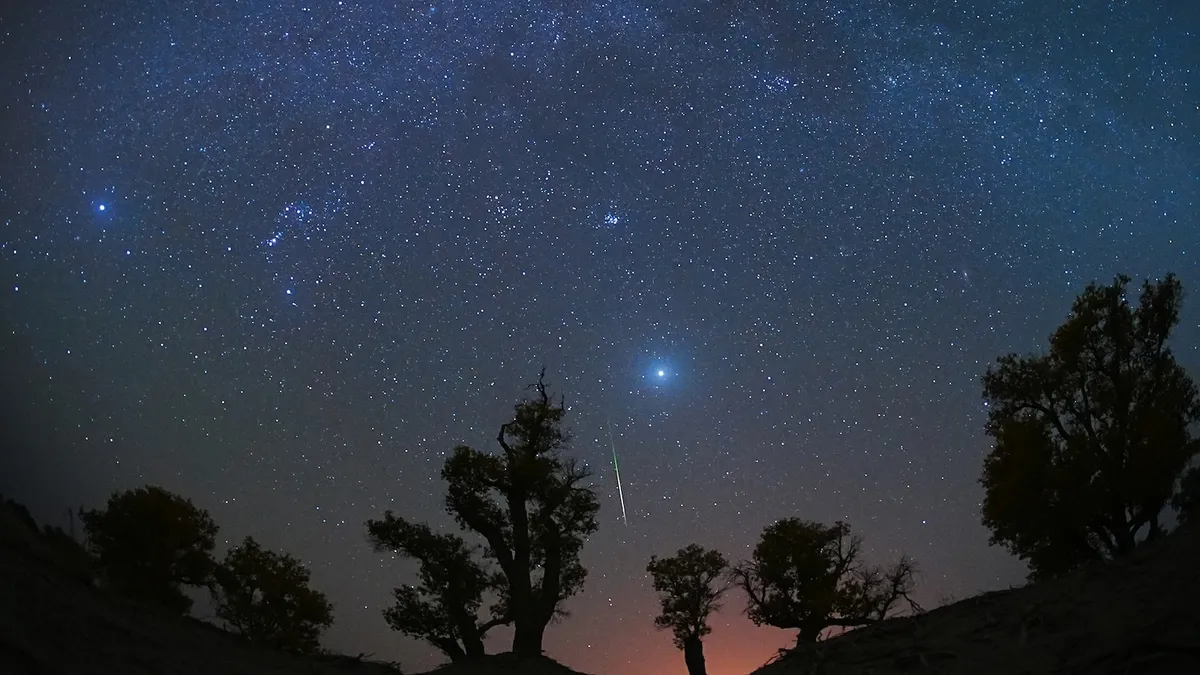
The Orionid meteor shower, which has been captivating stargazers since early October, is set to reach its full brilliance this week. NASA describes the Orionids as one of the most stunning meteor showers of the year, characterized by their remarkable brightness and impressive speed. Meteor showers like the Orionids occur when debris from comets, asteroids, or other cosmic bodies enters Earth's atmosphere, igniting spectacular displays of shooting stars across the night sky.
The Orionid meteor shower takes place annually during October and November, typically peaking in late October. What makes the Orionids particularly special, as noted by NASA, is their speed and luminosity. Observers can delight in witnessing these meteors soaring through some of the brightest constellations, providing a breathtaking visual experience from our planet. According to the American Meteor Society, the Orionids boast a zenithal hourly rate of 20, which measures the expected number of meteors visible under optimal viewing conditions.
This year, the peak of the Orionid meteor shower is anticipated between October 21 and October 23. NASA highlights that the most active night for viewing will be from October 22 to October 23. However, the International Meteor Organization suggests a slightly earlier window, recommending observation from the evening of October 21 through the night of October 22. The American Meteor Society provides a broader timeframe for peak activity, suggesting that the best viewing will occur from October 21 to October 23.
The Orionids can be observed from virtually anywhere on Earth, in both the Northern and Southern Hemispheres. For optimal viewing conditions, NASA recommends lying flat on your back with your feet positioned towards the southeast if you are located in the Northern Hemisphere, or northeast if you are in the Southern Hemisphere. This position allows for a wide field of view to fully appreciate the celestial display. It's important to note that it takes about 30 minutes for your eyes to adjust to the darkness, so patience is key as the meteor shower will be visible until sunrise the following day.
The mesmerizing Orionid meteor shower is a result of the debris left behind by Comet 1P Halley. As these tiny meteoroids enter Earth's atmosphere, they ignite and create the stunning visual phenomenon we enjoy during the shower. NASA explains that this process transforms the meteoroids into meteors, dazzling observers with their fleeting brilliance.
In conclusion, the Orionid meteor shower offers a compelling opportunity for stargazers to witness a truly spectacular natural event. Mark your calendars for the peak viewing nights and get ready to be enchanted by this celestial display!